Haunting photographs from our visit to the abandoned town of Pripyat in the Chernobyl Exclusion Zone… Thirty years on
Most people of a certain age have heard of the Chernobyl Disaster, often referred to simply as ‘Chernobyl’, the name of the nuclear power station that is the site of the world’s worst-ever nuclear disaster. Thirty years ago, on 26th April 1986, an accident at one of the reactors caused a catastrophic chain of events from which the true death toll is unknown (the official figure is around 30 but even that varies on the source) and which continues to affect thousands of lives today.
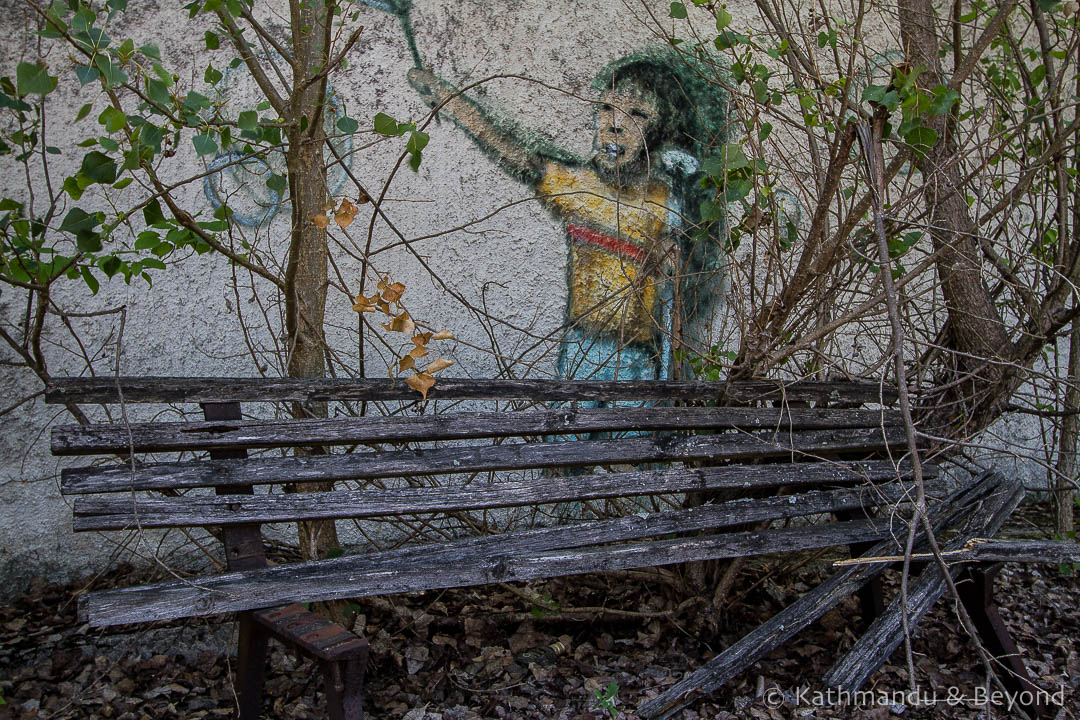
The town of Chernobyl is situated in northern Ukraine (the Ukrainian Soviet Socialist Republic at the time of the accident), approximately 90 kilometres north of Kyiv, the capital).
While it’s unlikely that Chernobyl is unknown to you, you may be forgiven for not having heard of Pripyat. However, it is the town of Pripyat, a couple of kilometres from the nuclear reactors, and not the smaller town of Chernobyl (around 20 kilometres away) where most photographs of the abandoned towns and villages in the Exclusion Zone are taken.
At the entrance to the town of Pripyat stands a freshly painted and well-maintained sign bearing its name. Established in 1970, Pripyat was a modern new town, built to provide a high standard of living for those working and managing the Chernobyl Nuclear Power Plant, along with their families. It was a prosperous town with a population of 50,000 and an average age of 26 years.
Today Pripyat is a ghost town and the streets and buildings lie in an abandoned state, overgrown by plants and trees and long ago looted of most of their contents. When the residents were eventually evacuated they had three hours to gather essential possessions and were told they would return in a few days. No one has ever returned to live in Pripyat.

Hotel Polissia, Pripyat Main Square
Driving towards the town it is just about possible to catch glimpses of buildings through the trees that have engulfed most of Pripyat. Our first stop was the town’s main square where the tallest remaining structure, the Hotel Polissia, stands. Built in the mid-1970s, it was a luxury hotel designed to host delegations and guests visiting the Chernobyl Power Plant.
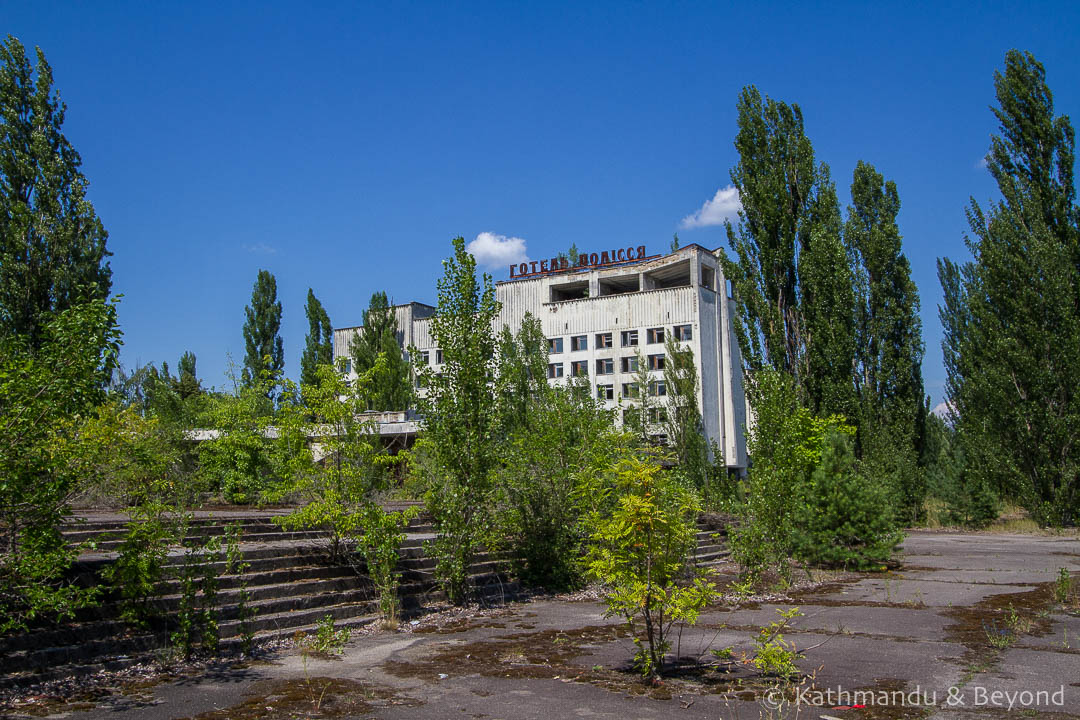
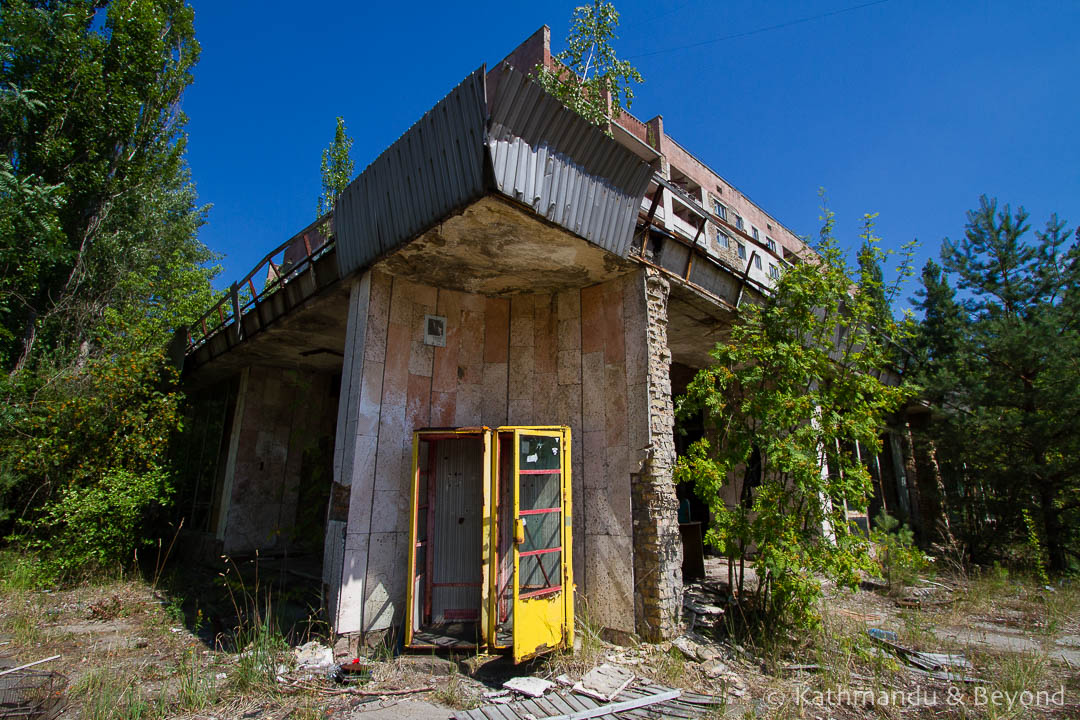
Pripyat Amusement Park
The most iconic images from the Chernobyl Exclusion Zone are those taken at Pripyat’s abandoned Amusement Park. More specific the Ferris wheel which has famously never been used. It was due to be opened for the very first time on 1st May 1986, in time for the May Day celebrations.
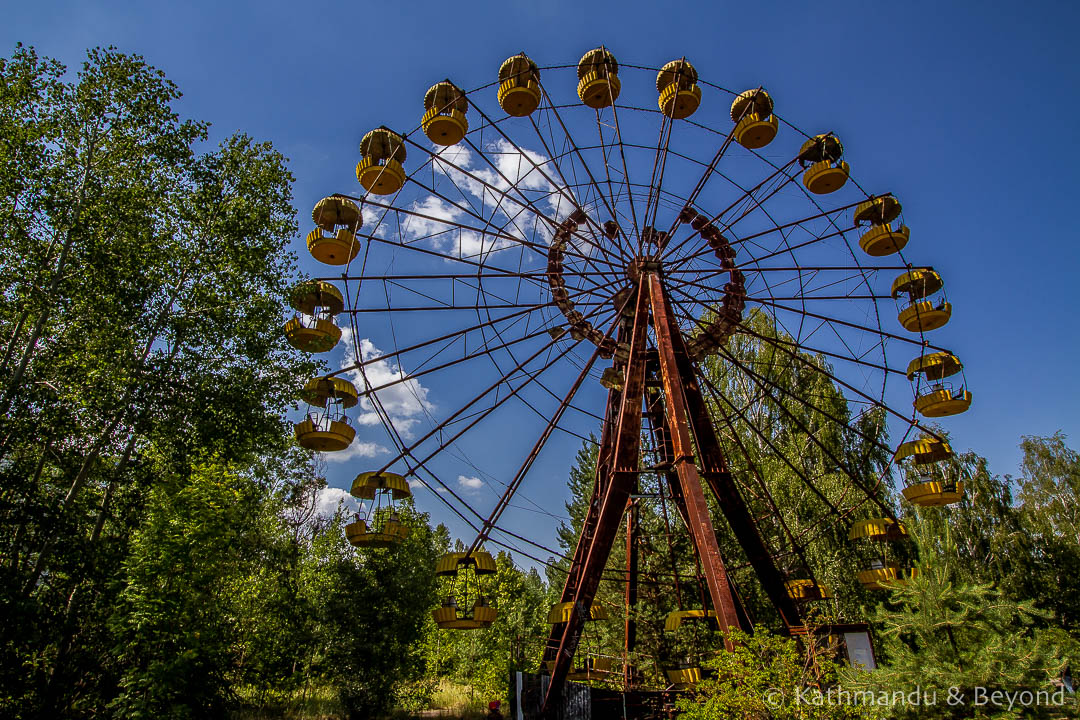
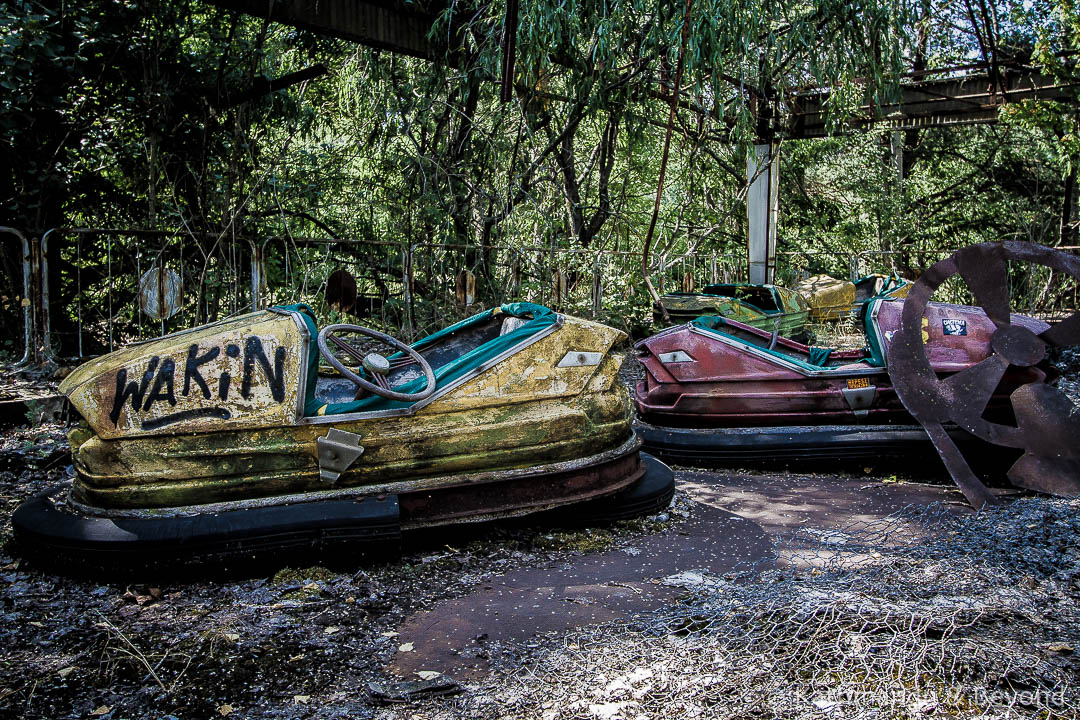
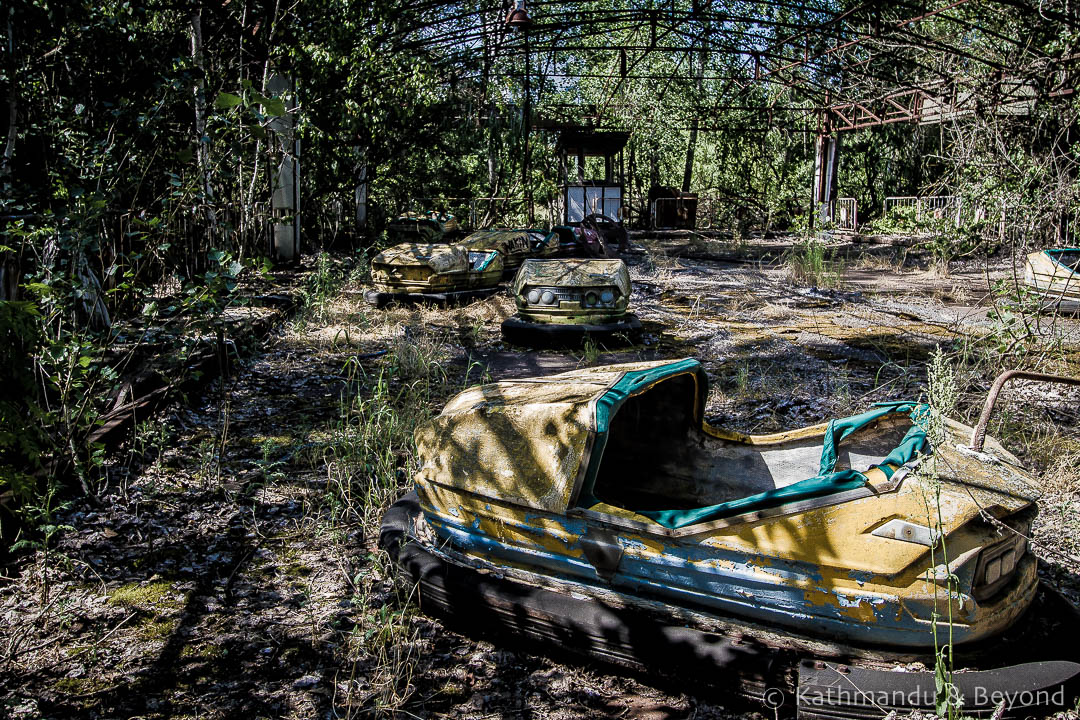
Azure Swimming Pool
The swimming pool was built in the 1970s but remarkably remained in use until 1996, a full ten years after the Chernobyl disaster. During those ten years, the pool was mainly used by the Liquidators, the name given to the military and civil personnel who were called upon to deal with the aftermath of the Chernobyl Disaster. They took enormous risks, which many haven’t survived, and have been credited for their efforts in limiting the immediate as well as the long-term damage, including averting a second, much more powerful explosion.
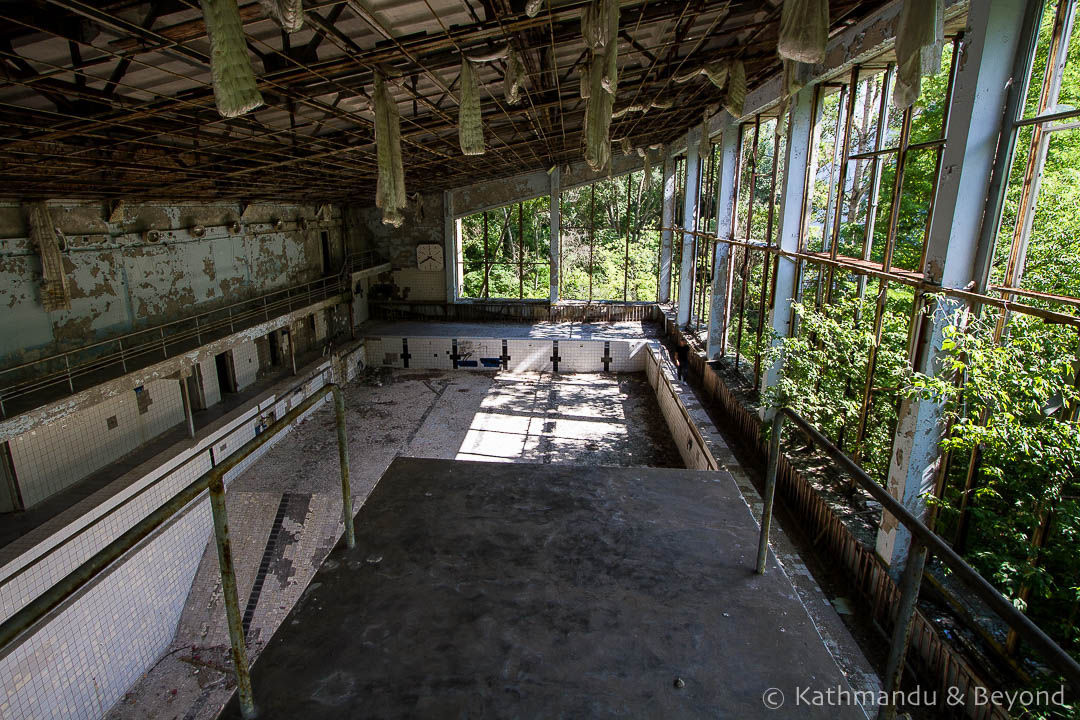
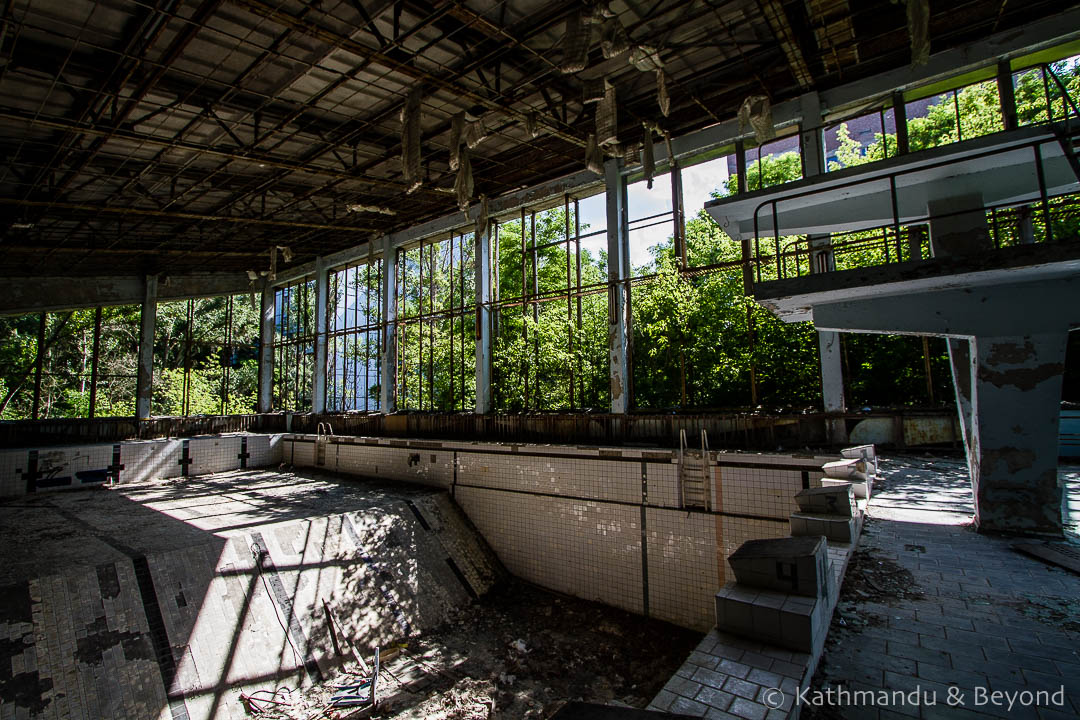
Recreation Centre & Basket Ball Court
Adjacent to the swimming pool in the recreational centre, we explored the equally derelict basketball court and abandoned staircases.
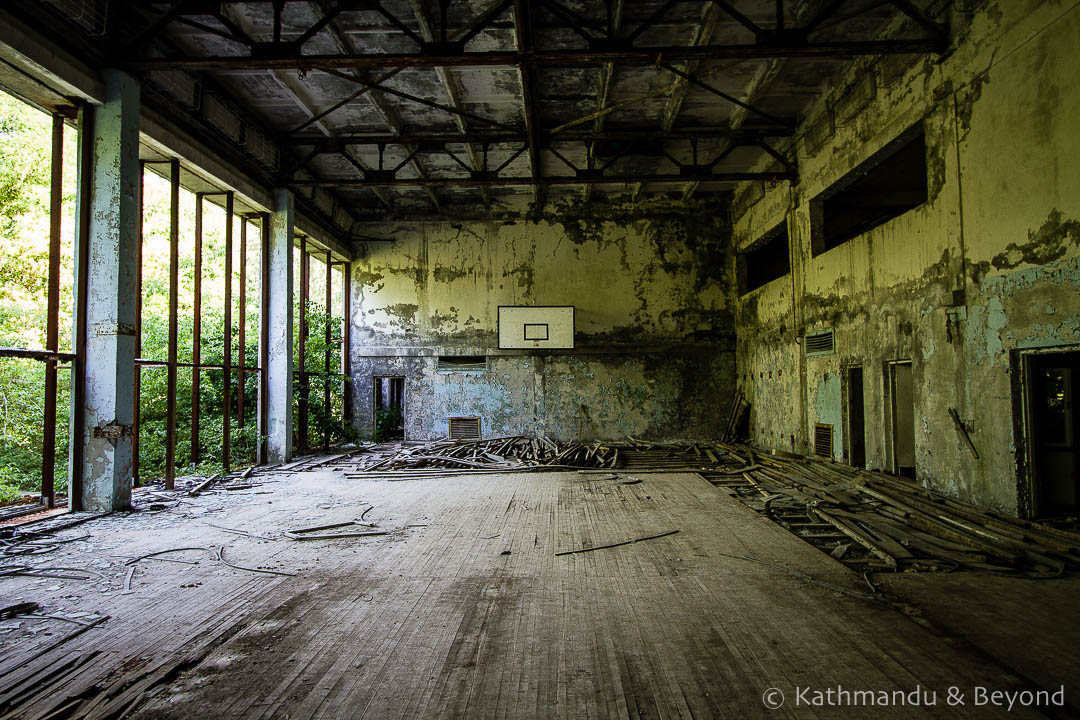
Avanhard Stadium
At Avanhard Stadium we walked across the football pitch, which today is more like a forest with a concrete floor than a football field, to the stands where fans once sat supporting their home team, FC Stroitel Pripyat.
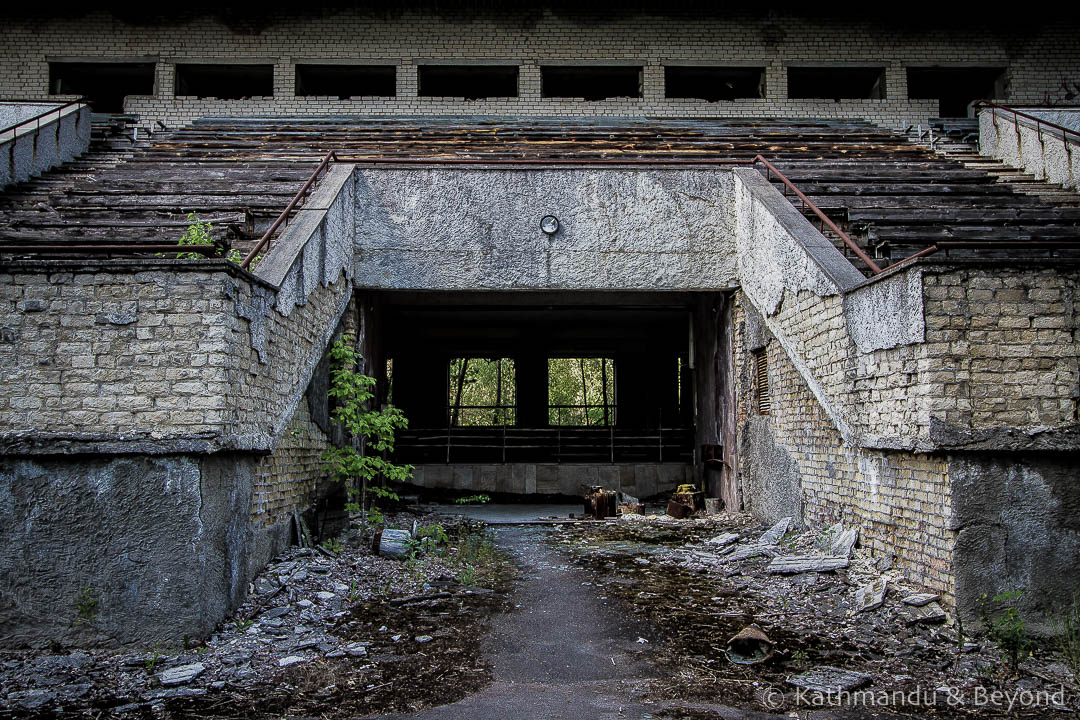
Just inside the stadium building, these pots of paint were left standing when the town was evacuated. Most likely, the stadium was receiving a cosmetic touch-up prior to grand May Day celebrations which were due to be held less than a week later.
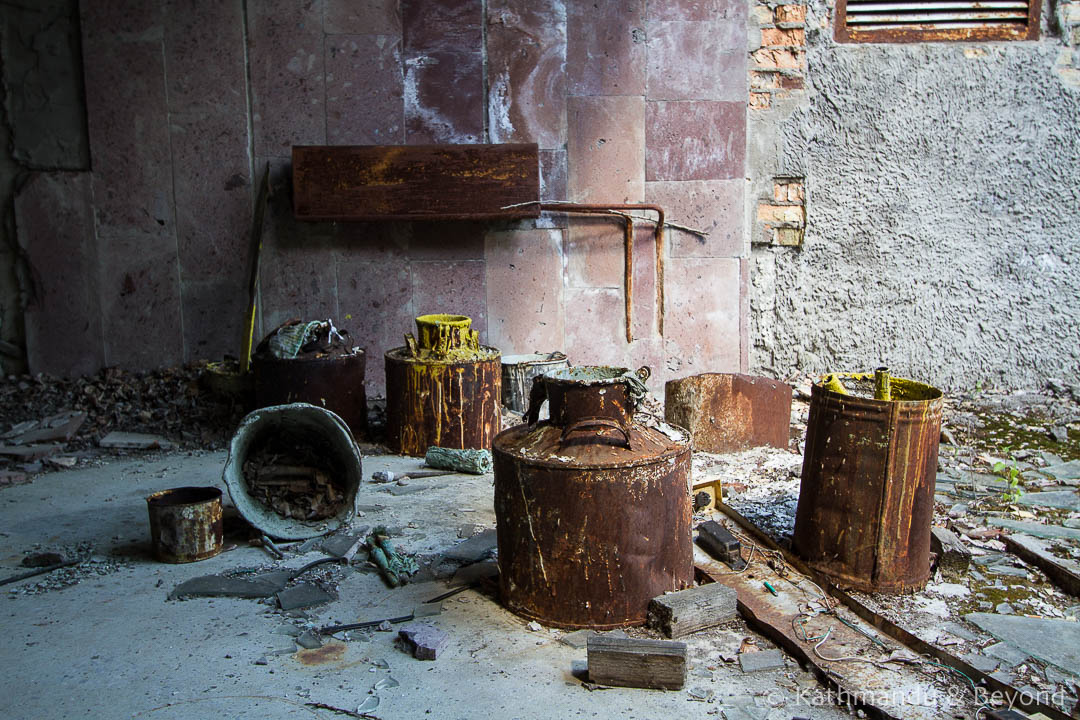
Palace of Culture Energetik
Palace of Culture was the Soviet-era name given to community centres throughout the USSR. Their purpose was to provide a range of pastimes and artistic activities for the residents, usually with the underlying theme of political propaganda, the evidence of which is still on display. The name of Pripyat’s Palace of Culture is a play on words: ‘Energetik’ translates as energetic (as in, active or lively) and also power plant worker.
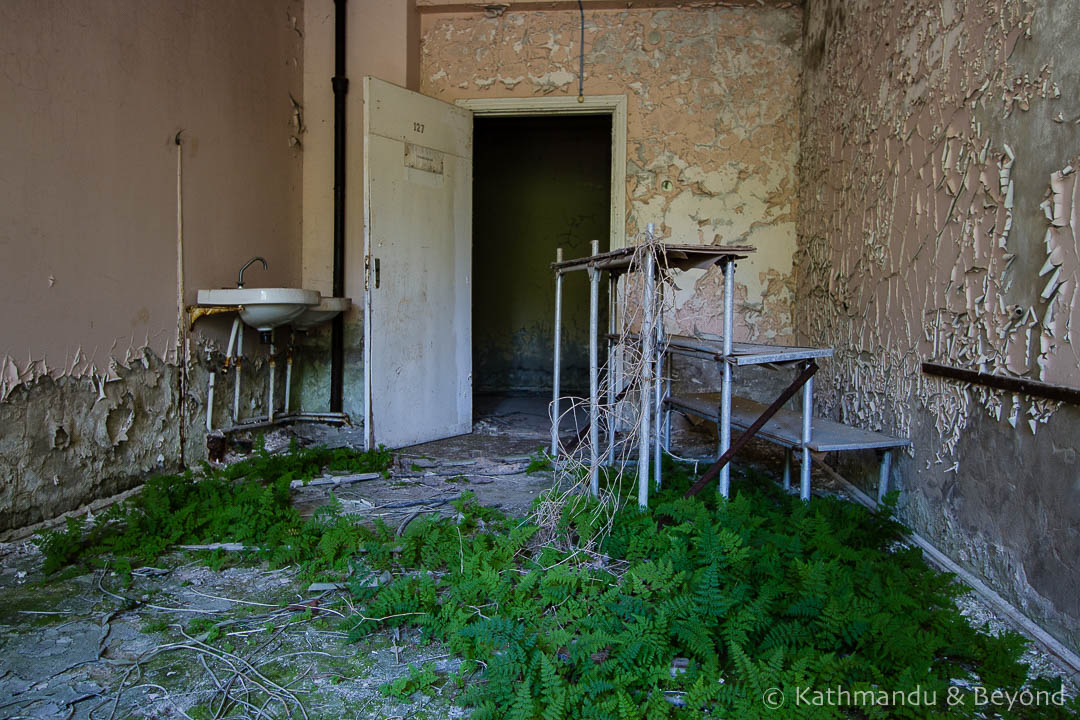
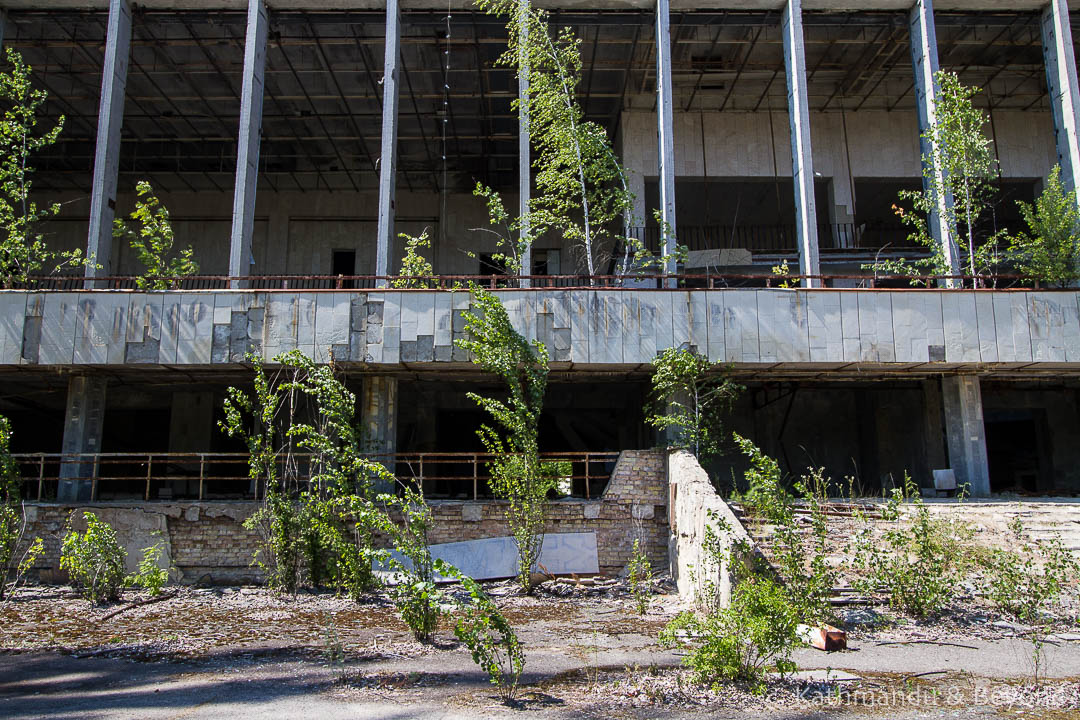
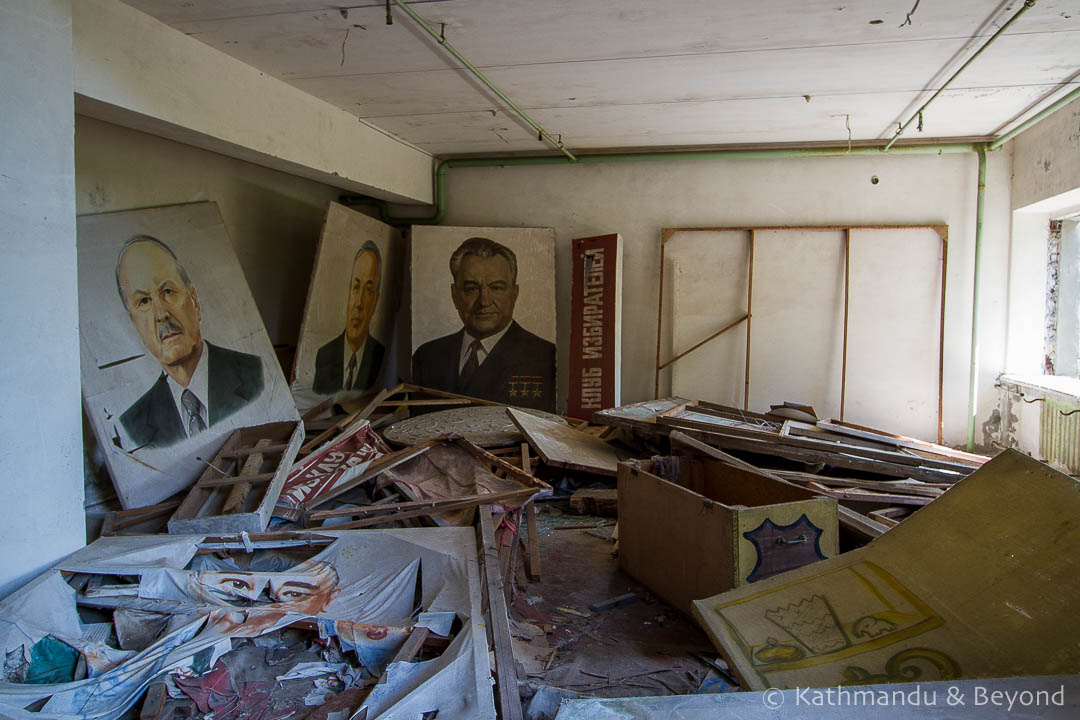
Middle School Number 3, Pripyat
Middle School No. 3 is next door to the Azure Swimming Pool and was one of five secondary schools in Pripyat; its corridors are now deserted and decaying. One of the rooms that pretty much all visitors to the Chernobyl Exclusion Zone are taken to contains hundreds of child-sized gas marks, strewn across the floor. My immediate thought was that these masks were used immediately following the explosion. But the residents of Pripyat were not warned of the dangers of being exposed to nuclear fallout. The masks would have been stored at the school during the cold war era in case of a nuclear attack and the reason they now litter the floor is because in the years following the evacuation, buildings and homes were looted and the raiders unpacked the gas masks to remove the tiny piece of silver contained in the filter.
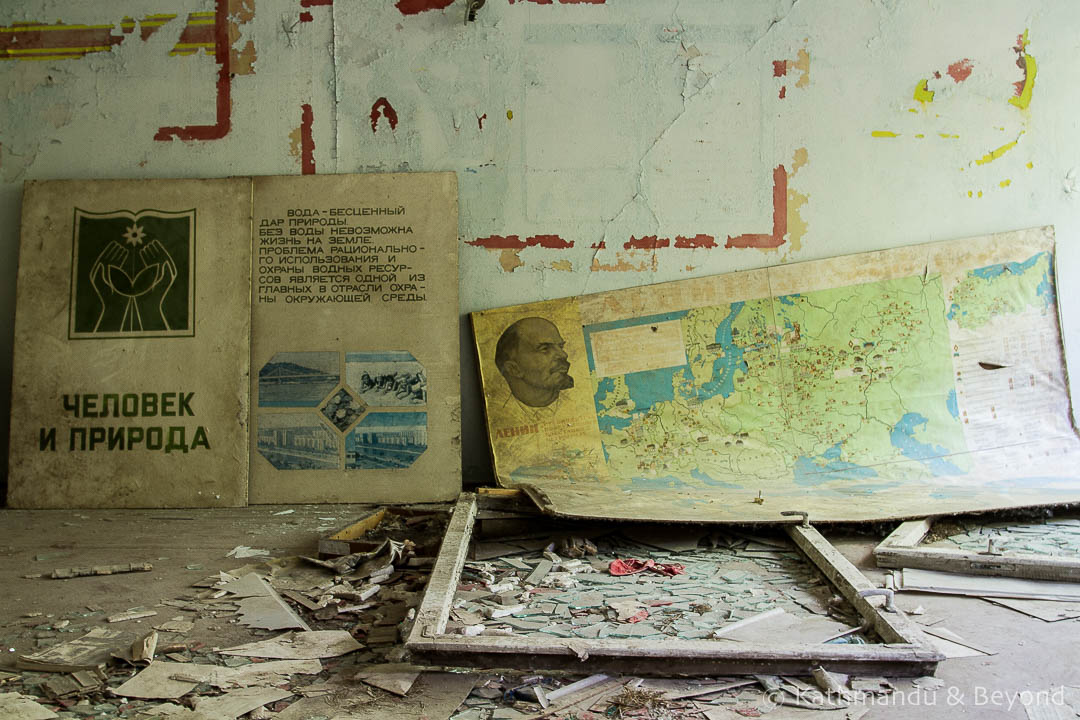
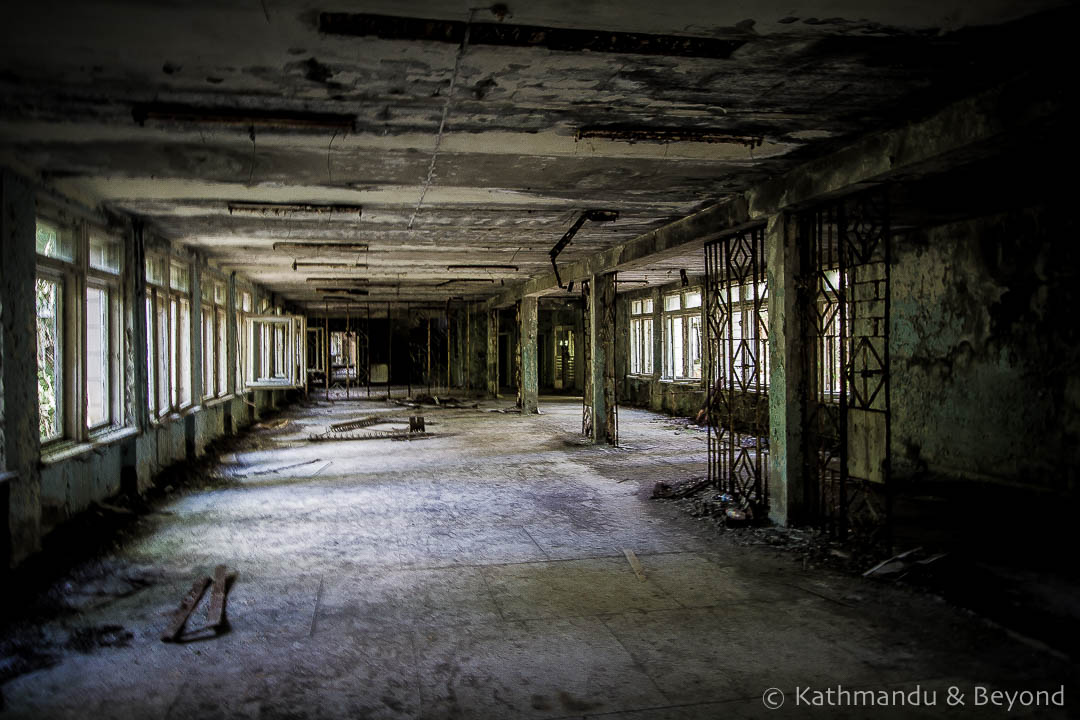
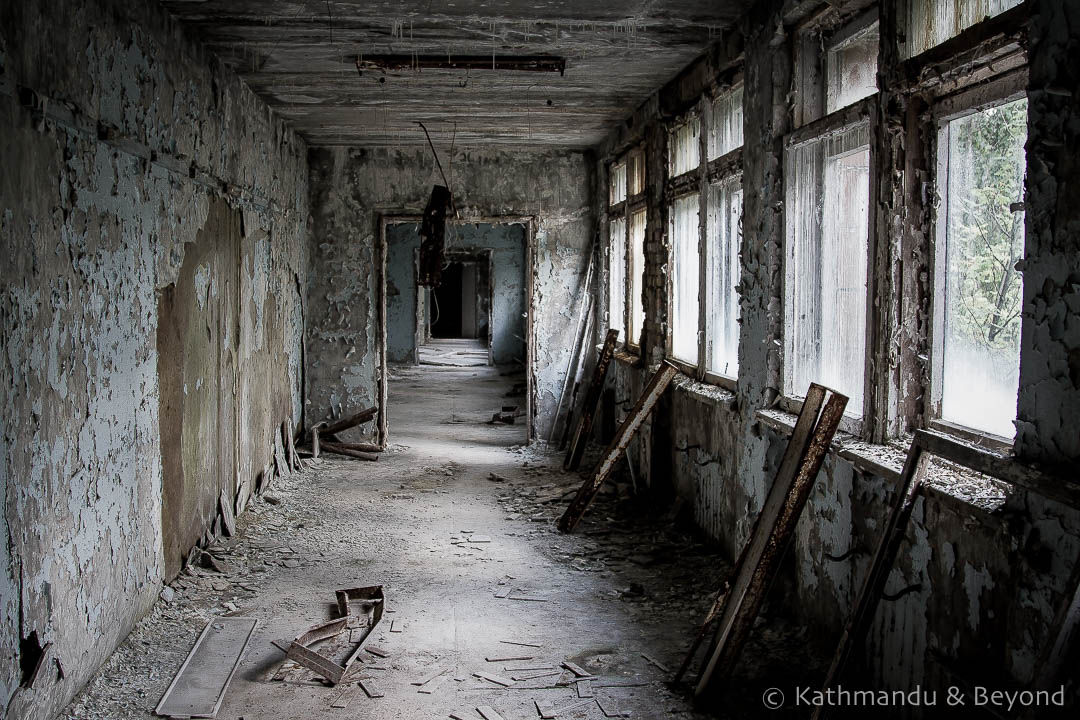
Some of the most emotive photographs coming out of Chernobyl and Pripyat feature these gas masks and seeing them was also a cause of mixed feelings for me. Staged scenes such as the ones below undoubtedly produce ‘cool’ photos, but it suddenly made me feel very voyeuristic. It also gave pause for thought. These weren’t just abandoned buildings we were tramping through; these were people’s homes, schools and workplaces and lives changed very suddenly following the accident.
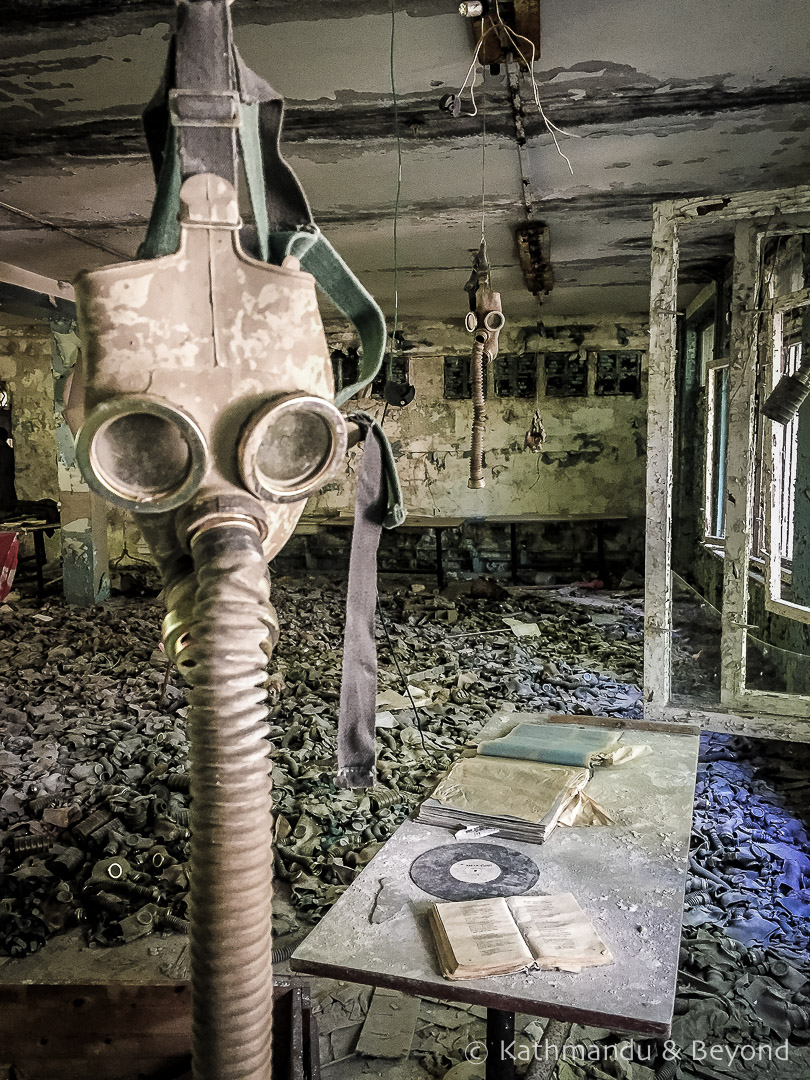
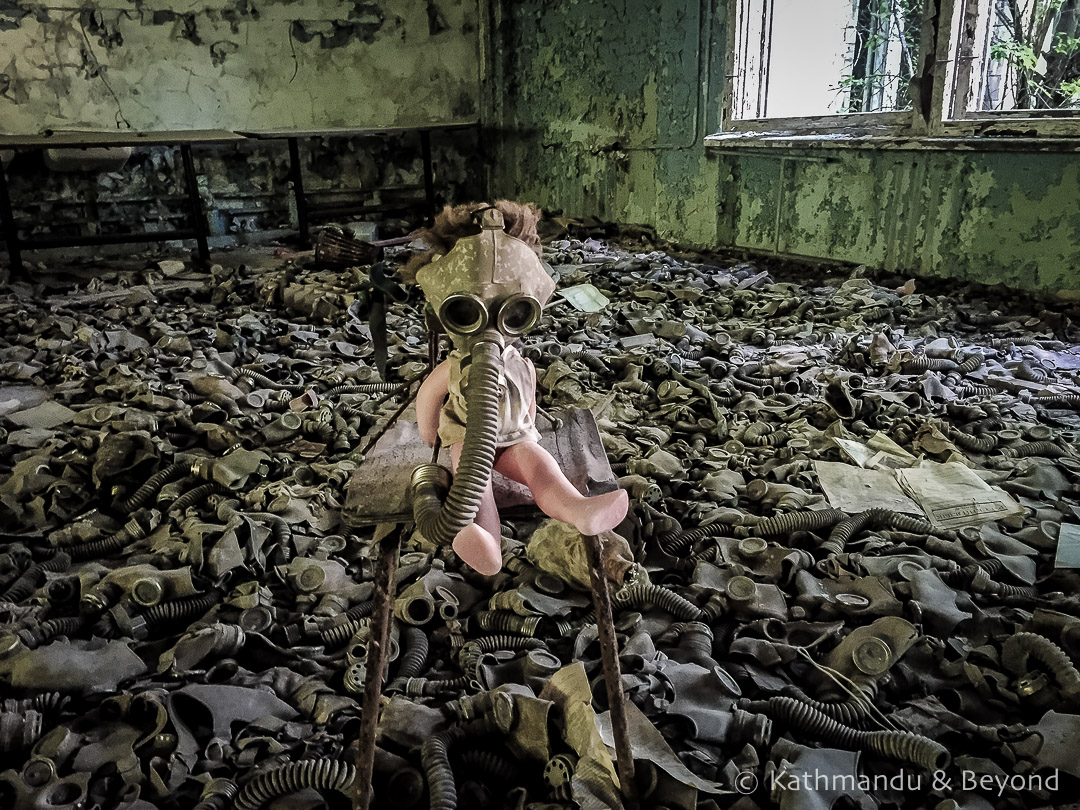
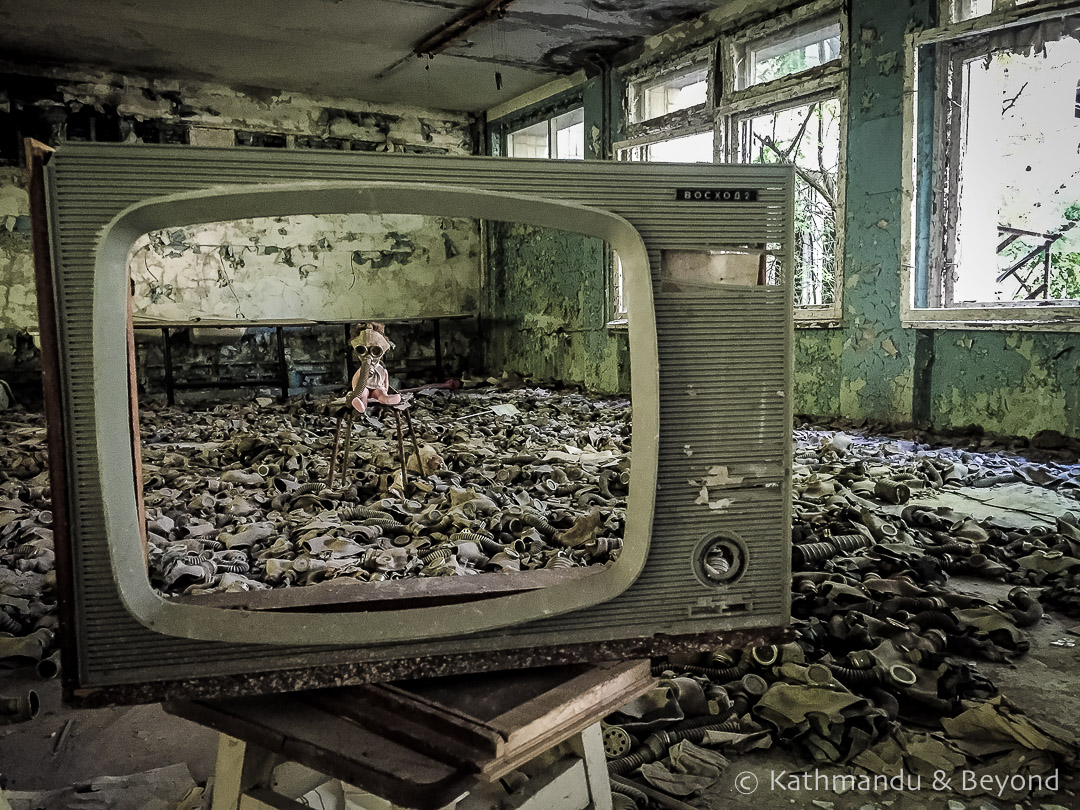
City Hospital No. 126
We couldn’t determine whether the very Soviet-era named City Hospital No. 126 was a maternity/gynaecology and children’s clinic or a general hospital although the evidence suggested the former. What we did learn was that it was the first port of call for the immediate casualties of the accident, although the medical staff quickly realised the hospital was under-equipped to deal with the severity of the situation. We visited rooms containing baby cots and operating tables that we were told would have been used for both delivering and aborting babies. Other rooms had desks covered in unused medicines and other medical supplies.
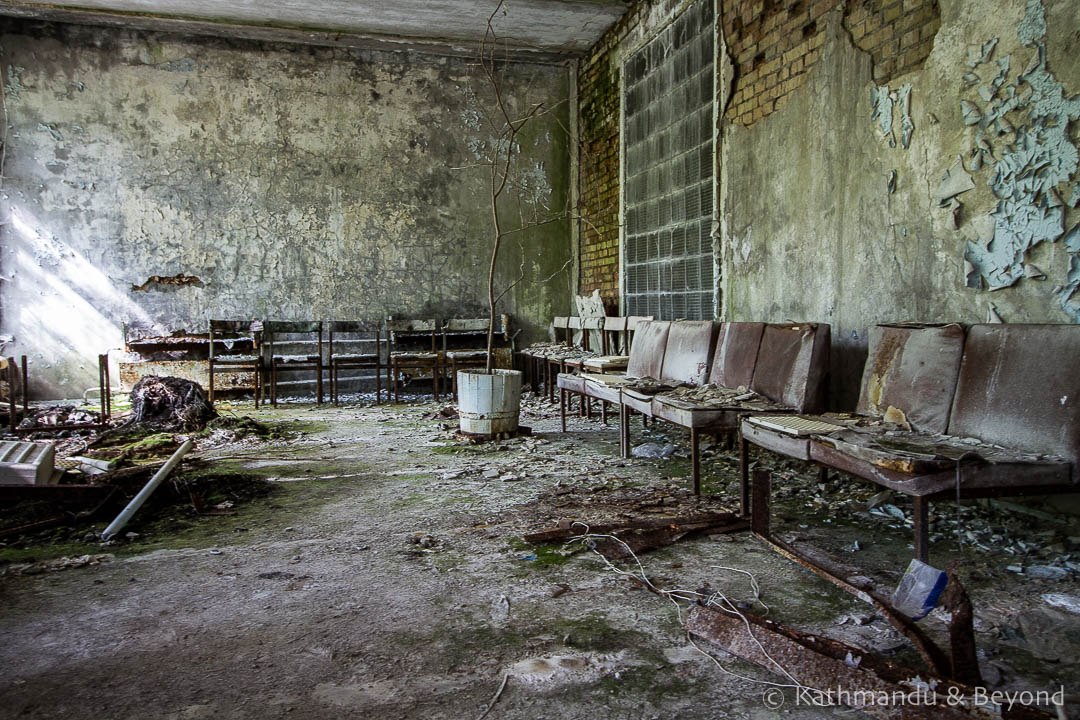
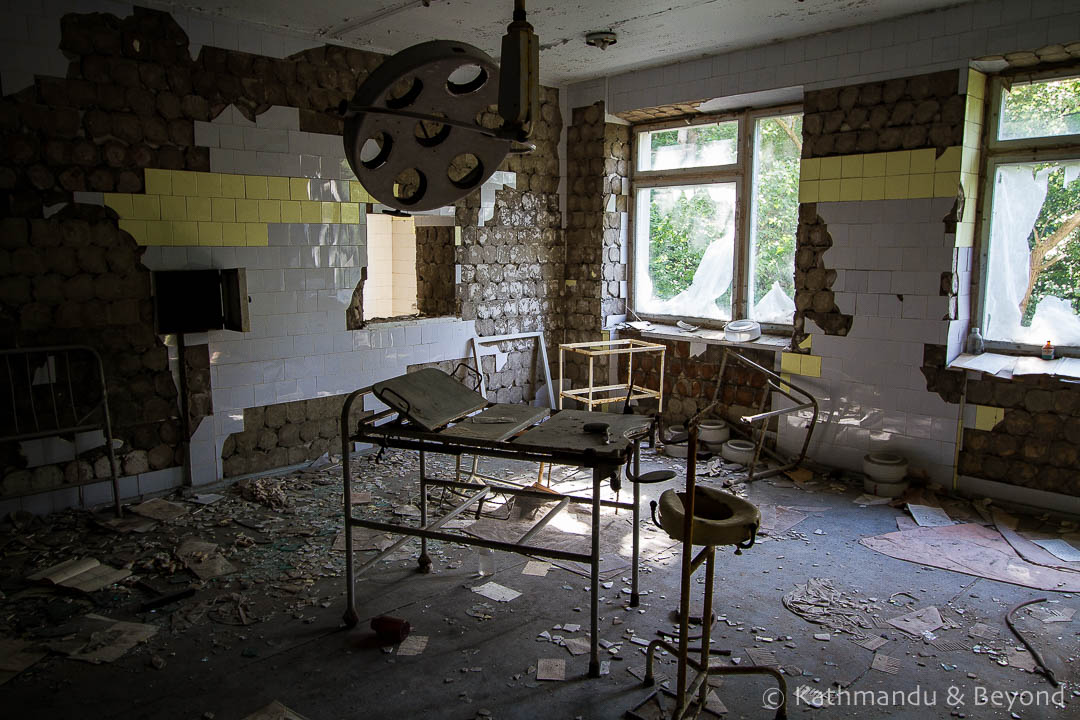
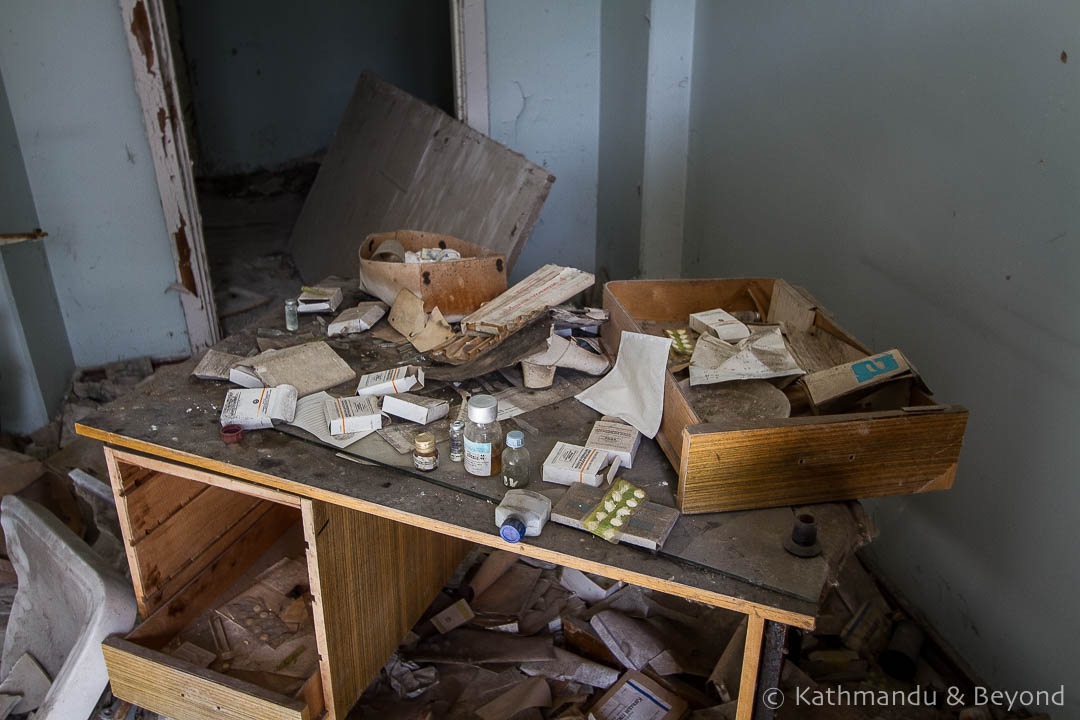
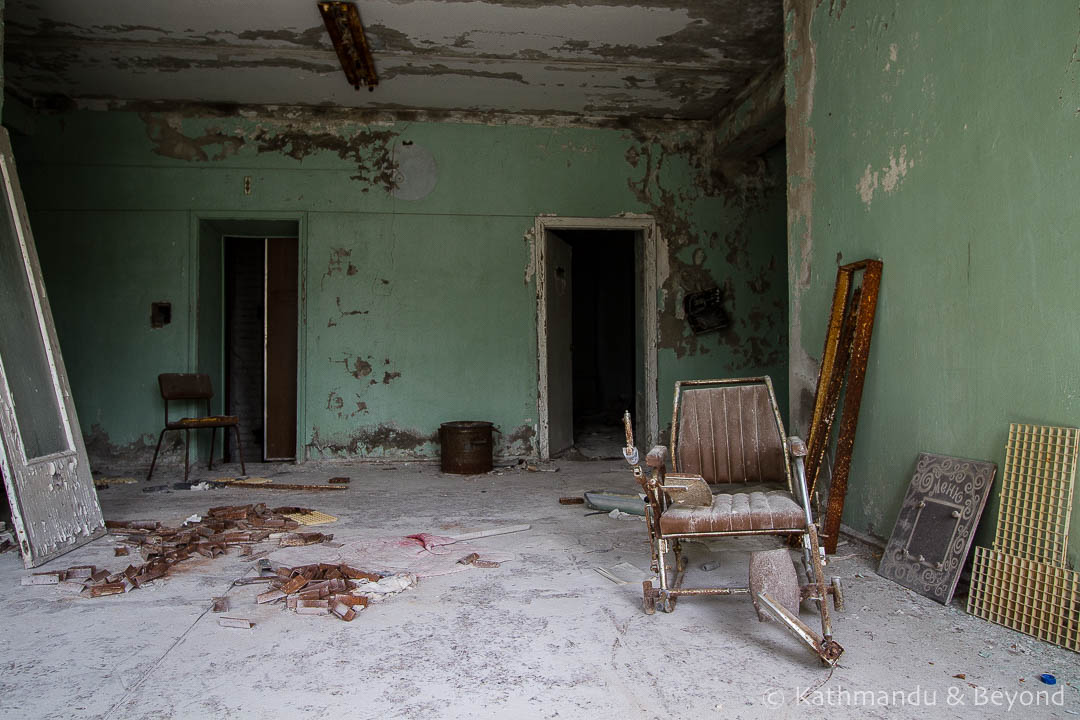
Our exploration of the abandoned town of Pripyat was just one part of our full-day tour to Chernobyl Exclusion Zone with CHERNOBYLwel.come who we would highly recommend if you are planning to visit Chernobyl yourself. It was a long and tiring day but an unforgettable experience.
Chernobyl is a place we had wanted to visit for some time so we’re keen to share our photographs as soon as possible. What do you think? Have you visited or would you like to?
SEE MORE BLOG POSTS FEATURING ABANDONED PLACES
READ MORE UKRAINE BLOG POSTS

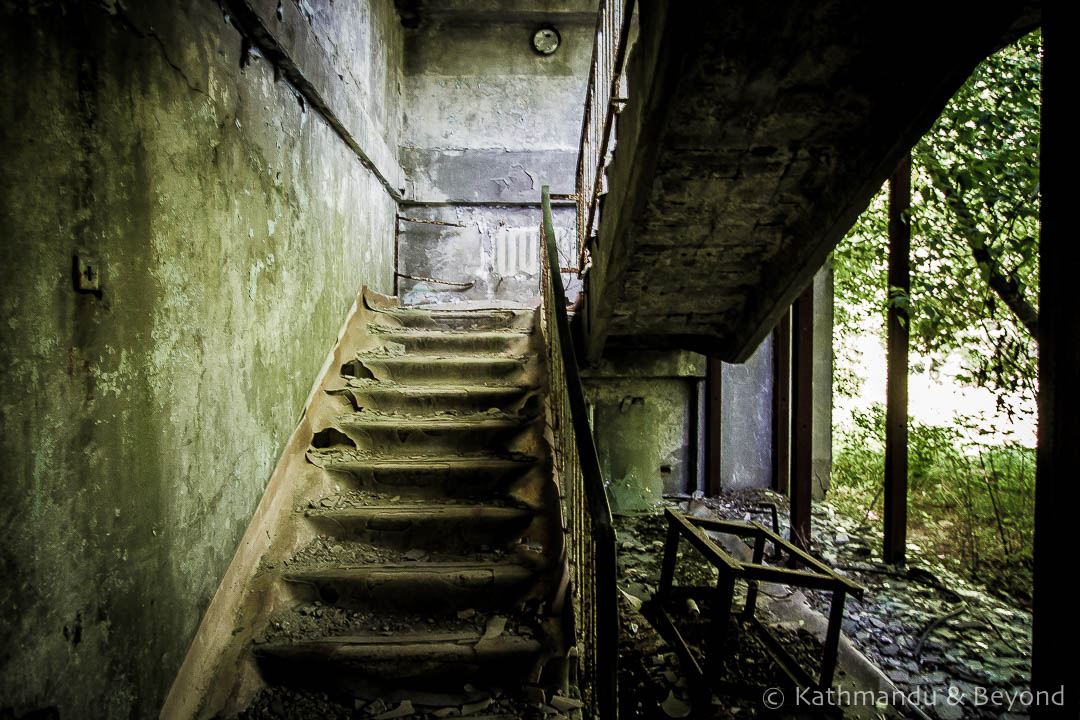
Awesome, gruesome and haunting. The pictures tell the story.
I would be interested to know more about why reactor number 4 blew up. Can you direct me to a good website that explains what happened without getting too technical?
Good question! I’ll aim to include a bit of info on that in the next post and/or include a link with more details.
This is somewhere that I really want to visit! I love visiting old and abandoned places, like this!
It was a great place to explore and also learn more about the Chernobyl accident. And Kiev is a fantastic city too so that’s double reason to go! 😉
Very interesting. And great photos, as usual. Besides a description of your tour, I would be interested in hearing anything you found out about wildlife. I’ve read that there has been a sizeable increase in wildlife in the zone around the reactor that has been devoid of human habitation for 30 years.
Thank you! 🙂 Yes, you’re right about the wildlife and a great suggestion for including information about it in the next post. I was amazing at how green the area was and particularly in Pripyat where I expected it to be much more desolate instead of overgrown with so much vegetation.
A great set of images. The Ferris wheel stands out as a symbol of pleasures never enjoyed and the school, young lives wasted. Nature slowly but surely reclaims; perhaps this reminds you off the temples in Cambodia. If it is allowed to stand it will be an interesting archaeology site centuries hence.
Thank you! 🙂 The fairground was a particularly poignant part of the town, and yes, you’re right – the creeping foliage did remind us of Angkor and other temples we’ve been to.
Such haunting and awesome photos. So this is what it looks like if I had any photography skills whatsoever… my photos from there are not so great.
I never got a chance to go into the hospital all as we ran out of time as a group of Belgian guys decided Chernobyl was a good stag-do and to be terrors on our tour. Oh well … 🙂
Despite the sadness of what happened, I enjoyed the trip there and putting places w/ all of the information I already had on the place (I did a massive report on it at University). Thanks for sharing these pics!
Thanks Megan, for the flattering comments. We have to admit we took a LOT more photos and had a hard job deciding which ones to include here!
Mmm, Chernobyl for a stag do is an interesting choice! Although I can see why one might pick Kiev.
Talking to people recently about our visit, I’ve been conscious not to use too many superlatives out of respect for what happened, however I think a visit to Chernobyl does balance poignancy and enjoyment quite well.
Such evocative pictures, thanks for sharing! There’s quite a games using Pripyat as a setting. To me, I think that’s a certification for creepiness and desolation. I hope too that some day, life would return to this abandoned city.
And thanks for reading. The ‘scene setting’ is quite a tricky one. It certainly helps tell the story and maybe for some, gives a bit of perspective and a reality check?
Wow. Really haunting. Great photos.
Frank (bbqboy)
Thanks for checking them out! 🙂
I got goosebumps looking at your pics! Very creepy but very cool at the same time!
That just about sums it up! Thanks for reading! 🙂